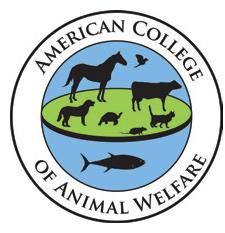Veterinary Welfare Education in the United States
Welfare education is on the rise and there is a growing number of veterinary students with an interest in animal welfare. Some schools have taken notice and have either integrated animal welfare throughout their curriculum or have individual classes to educate students on the topic.
In the United States there are opportunities to get involved with animal welfare but they are few and far between. Specific to breeding dog welfare, Purdue University has a project focused on the welfare of purebred dogs. In terms of broad animal welfare education, Iowa State University has a variety of formal classes and even a clinical rotation in animal welfare. Their faculty research interests are primarily large animal but the courses cover companion, livestock, and wildlife animals. Michigan State University also offers an online animal welfare course. In addition, the Animal Welfare Judging and Assessment Contest, started in 2002, continues to expand including international participation.
expand including international participation.
While the importance of animal welfare in some circles is growing, it is not echoed everywhere. In talking with IPFD Board member Patricia N. Olson, DVM, PhD, a Diplomate of the American College of Animal Welfare and the American College of Theriogenologists, I learned more about gaps in our United States welfare education. Formal courses on animal welfare training are limited and some challenges still remain…
- The American College of Animal Welfare was recently created for veterinary board certification in animal welfare. While this is a great step towards veterinarians having the formal training to lead animal welfare discussions, funded training programs at U.S. veterinary colleges have been slow to develop, making it difficult for veterinarians to obtain the education required for completion of the specialty.
- The American Kennel Club recently announced expanding residency program funding. This is a great step forward to advance the science/education of dog breeding. Also important is the integration of welfare and ethical aspects on topics like dog breeding, dog behavior, cosmetic surgery, etc. in these training programs.
- A recent article, “Survey of animal welfare, animal behavior, and animal ethics courses in the curricula of AVMA Council of Education–accredited veterinary colleges and schools”, published in the Journal of the American Veterinary Medical Association, reported that only 6 out of 30 U.S. schools offer a formal course with welfare in the title. As stated in this article, written by Chelsey Shivley, DVM, PhD, some of the schools may offer animal welfare education throughout the curriculum, rather than a specific class, but it speaks to a need for transparency in education. In addition, when the 30 schools were surveyed through the Association of American Veterinary Medical Colleges about the education they offered related to animal welfare, only 33% responded. Why such a low response rate? Lack of interest?
- Why did the Humane Society of the United States launch its own veterinary association specifically focusing on welfare? Did they feel that the emphasis on welfare was lacking elsewhere in the veterinary profession?
An article entitled "Student perspectives on animal-welfare education in American veterinary medical curricula", published in the Journal of Veterinary Medical Education in 2010, stressed the need for more animal welfare education in schools. One wonders what the progress has been since then given the more recent report cited above. In a book review on Ethics of Animal Use I wrote, I acknowledge a need for additional educational materials to be used in animal welfare education. I recommend “that veterinary and other animal science students read this book to engage in animal ethics discussions, whether or not it is included in their education as a required text.”
As I hope more students become involved in animal welfare, I would like to know other educational opportunities you have participated in, or are aware of, that broaden a veterinarian’s understanding of animal welfare. Hopefully together we can increase awareness of a growing interest for more education in this area. Please register on DogWellNet if you haven’t done so to comment below.
 Donate
Donate
13 Comments
Recommended Comments